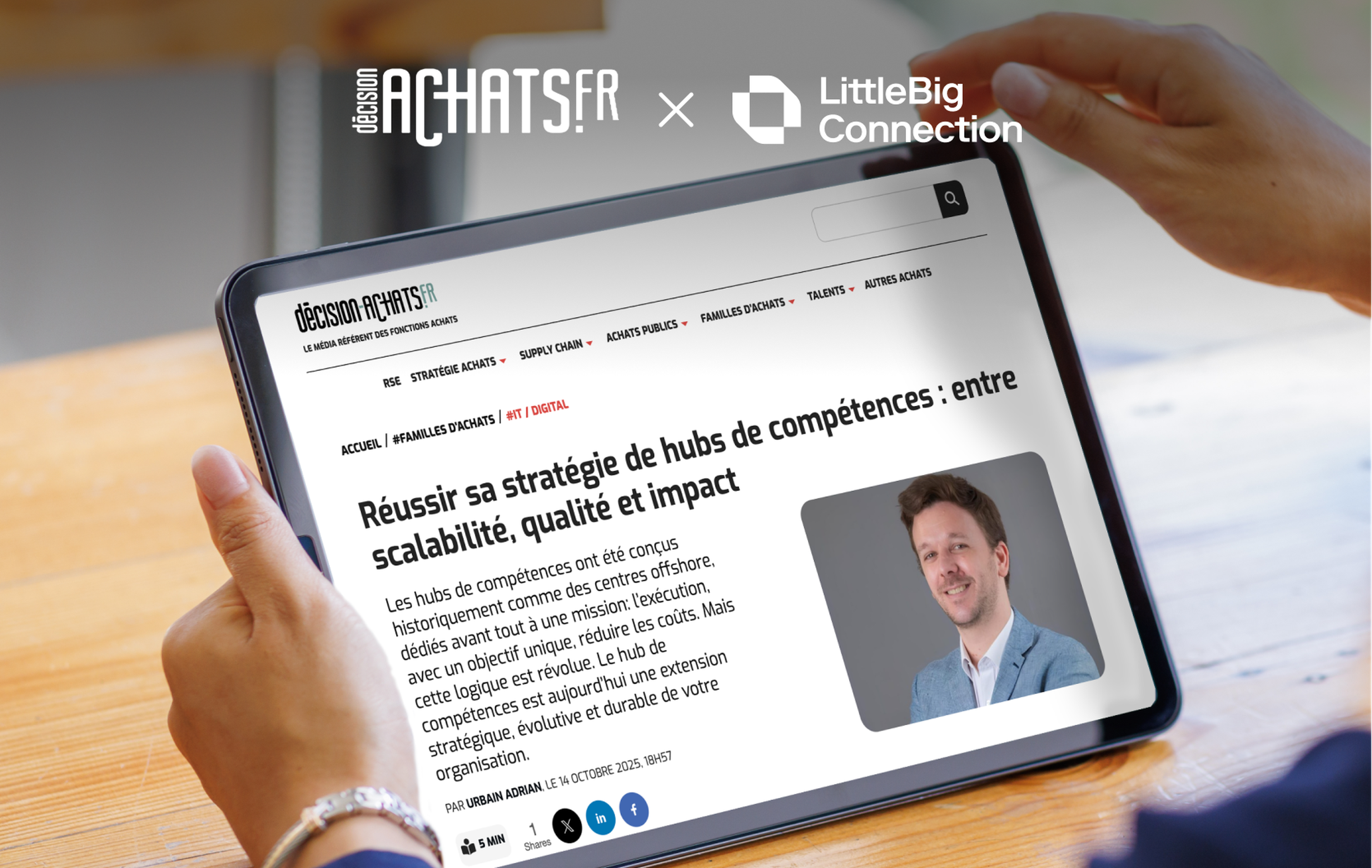Disclaimer: this article is a translation from the original french piece published by Décision Achats.
Historically, capability hubs were designed as offshore centers dedicated first and foremost to one mission: execution—with a single objective, reducing costs. That era is over. Today, a capability hub is a strategic, scalable, and sustainable extension of your organization.
Today, a capability hub is no longer just a cost-cutting lever. It is a tool for scalability, resilience, innovation, and a driver of time-to-value. The main goal is no longer “doing it cheaper,” but delivering faster, better, and at scale thanks to already-trained, available, and immediately operational talent.
In this context, Asia—particularly India, Malaysia, and Thailand—stands out as a strategic region. These countries offer deep pools of qualified, English-speaking, agile talent already familiar with international ways of working.
Below are the key levers to build a capability hub as a strategic, scalable, and sustainable extension of your organization.
Lay the right foundations for a scalable hub
A capability hub cannot be improvised. Success rests on rigorous upfront preparation.
Where companies previously launched large Build-Operate-Transfer (BOT) programs with major players—often at prohibitive costs—it is now possible to rely on a more agile partner with genuine local expertise to identify and integrate talent quickly. This approach increases agility, controls costs, and keeps ownership of the hub from day one.
Scalability hinges on critical mass from the start: planning for at least one hundred people enables the setup of support functions, solid governance, and a management framework capable of delivering value and supporting future growth.
In practice, nearly all companies start their hub with IT roles—those most externalizable and most strategic to quickly gain agility. Other functions (HR/payroll, procurement, R&D, marketing, CSR, etc.) can follow but usually come second in the initial phase.
Three pillars structure the rollout:
1) Shared governance with clear indicators:
staffing rate
success/placement rate (hit ratio)
average time-to-fill
offer-to-joining ratio
attrition rate
Plus real-time steering tools to track operational performance, streamline execution, and manage a progressive, controlled ramp-up.
The aim is to avoid a client-supplier mindset and build true collaboration.
2) HR policies adapted to local realities:
Consistent with the company’s overall philosophy but tailored to local practices (management, ways of working, rituals) and supported by a clear employee value proposition to attract and retain talent.
3) Shared change management:
Transformation only succeeds if local management and global leadership move forward together, with co-accountability and continuous alignment on objectives and ways of working.
Leverage volume without compromising quality
One major advantage of a hub is the depth of its talent pool. But exploiting that volume requires a robust qualification process that blends technology with human expertise.
An optimized journey relies on:
High-volume sourcing via a platform that centralizes all talent sources: consulting firms, recruitment agencies, independents and freelancers;
AI-based scoring of technical skills;
Calibrated technical and soft-skill assessments;
A tight, relevant, motivated shortlist.
This model yields an excellent hit ratio and avoids the “CV warehouse” effect that limits the effectiveness of poorly structured hubs.
Create an environment that engages and retains
A high-performing hub is not just a sourcing machine: it’s a place where talent chooses to stay and grow. That requires a clear, transparent employee value proposition including:
Smooth, personalized onboarding;
Managerial rituals that strengthen ties with business leaders;
Ongoing training and upskilling opportunities;
Clear career paths from the outset.
Secure execution with a reliable, structured organization
Success also depends on solid, compliant execution. This is where intermediation platforms come in:
Contracts designed for professional services, with a multi-model talent acquisition approach: recruitment, contract-to-hire, time & materials, etc.;
Systematic verification of legal documents;
Local compliance ensured;
Real-time tracking of assignments and renewals;
Centralized, secure payments.
This infrastructure reduces legal and administrative risk while accelerating time to launch.
The hub as a transformation lever
A capability hub becomes a vector for sustainable performance—serving speed, quality of execution, and value creation at scale.
But to play that role, it must rely on:
A rigorous, scalable ramp-up operating model;
Strong governance and precise KPIs;
An engaging employee value proposition;
Continuous adaptability.
As a true pivot between strategy, execution, and innovation, the capability hub becomes a driving force for enterprise transformation.
Disclaimer: this article is a translation from the original french piece published by Décision Achats.



